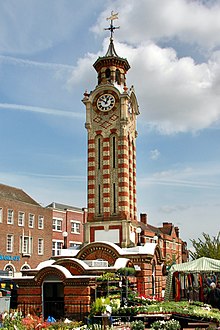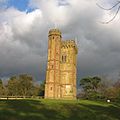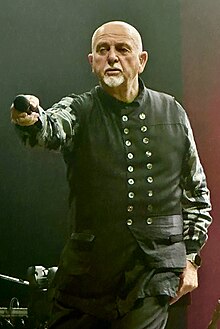| WikiProject Surrey | Surrey Portal |
The Surrey Portal

Surrey (/ˈsʌri/) is a ceremonial county in South East England and one of the home counties. It is bordered by Greater London to the northeast, Kent to the east, East and West Sussex to the south, and Hampshire and Berkshire to the west. The largest settlement is Woking.
The county has an area of 1,663 km2 (642 sq mi) and a population of 1,196,236. Much of the north of the county forms part of the Greater London Built-up Area, which includes the suburbs within the M25 motorway as well as Woking (103,900), Guildford (77,057), and Leatherhead (32,522). The west includes part of the Farnborough/Aldershot built-up area, which extends into Hampshire and Berkshire and has a total population of 252,397. The south of the county is rural, and its largest settlements are Horley (22,693) and Godalming (22,689). The county contains eleven local government districts, which are part of a two-tier non-metropolitan county also called Surrey. The county historically included much of south-west Greater London and excluded Spelthorne, which was part of Middlesex.
The defining geographical feature of the county is the North Downs, a chalk escarpment which runs from the south-west to north-east and divides the densely populated north from the more rural south; it is pierced by the rivers Wey and Mole, both tributaries of the Thames. The north of the county is a lowland, part of the Thames basin. The south-east is part of the Weald, and the south-west contains the Surrey Hills and Thursley, Hankley and Frensham Commons, an extensive area of heath. The county has the densest woodland cover in England, at 22.4 per cent. (Full article...)
Selected article
Epsom is a town in the borough of Epsom and Ewell in Surrey, England, about 14 miles (22 kilometres) south of central London. The town is first recorded as Ebesham in the 10th century and its name probably derives from that of a Saxon landowner. The earliest evidence of human activity is from the mid-Bronze Age, but the modern settlement probably grew up in the area surrounding St Martin's Church in the 6th or 7th centuries and the street pattern is thought to have become established in the Middle Ages. Today the High Street is dominated by the clock tower, which was erected in 1847–8.
Like other nearby settlements, Epsom is located on the spring line where the permeable chalk of the North Downs meets the impermeable London Clay. Several tributaries of the Hogsmill River rise in the town and in the 17th and early 18th centuries, the spring on Epsom Common was believed to have healing qualities. The mineral waters were found to be rich in Epsom salts, which were later identified as magnesium sulphate. Charles II was among those who regularly took the waters and several prominent writers, including John Aubrey, Samuel Pepys and Celia Fiennes recorded their visits. The popularity of the spa declined rapidly in the 1720s as a result of competition from other towns, including Bath and Tunbridge Wells.
Organised horse racing on Epsom Downs is believed to have taken place since the early 17th century. The popularity of Epsom grew as The Oaks and The Derby were established in 1779 and 1780 respectively. The first grandstand at the racecourse was constructed in 1829 and more than 127,000 people attended Derby Day in 1843. During the 1913 Derby, the suffragette, Emily Davison, sustained fatal injuries after being hit by King George V's horse.
The opening of the first railway station in Epsom in 1847, coupled with the breakup of the Epsom Court estate, stimulated the development of the town. Today Epsom station is an important railway junction, where lines to London Victoria and London Waterloo diverge. Since 1946, the town has been surrounded on three sides by the Metropolitan Green Belt, which severely limits the potential for expansion. Two local nature reserves, Epsom Common and Horton Country Park, are to the west of the centre and Epsom Downs, to the south, is a Site of Nature Conservation Importance. (Full article...)
Selected images
Selected biography
Peter Brian Gabriel (born 13 February 1950) is an English singer, songwriter and human rights activist. He was the original lead singer of the progressive rock band Genesis. After leaving the band in 1975, he launched a solo career with "Solsbury Hill" as his first single. His fifth studio album, So (1986), is his best-selling release and is certified triple platinum in the UK and five times platinum in the US. The album's most successful single, "Sledgehammer", won a record nine MTV Awards at the 1987 MTV Video Music Awards and, according to a report in 2011, it was MTV's most played music video of all time.
Gabriel has been a champion of world music for much of his career. He co-founded the WOMAD festival in 1982. He has continued to focus on producing and promoting world music through his Real World Records label. He has pioneered digital distribution methods for music, co-founding OD2, one of the first online music download services. Gabriel has also been involved in numerous humanitarian efforts. In 1980, he released the anti-apartheid single "Biko". He has participated in several human-rights benefit concerts, including Amnesty International's Human Rights Now! tour in 1988, and co-founded the Witness human rights organisation in 1992. Gabriel developed The Elders with Richard Branson, which was launched by Nelson Mandela in 2007.
Gabriel has won three Brit Awards—winning Best British Male in 1987, six Grammy Awards, thirteen MTV Video Music Awards, the first Pioneer Award at the BT Digital Music Awards, the Q magazine Lifetime Achievement, the Ivor Novello Award for Lifetime Achievement, and the Polar Music Prize. He was made a BMI Icon at the 57th annual BMI London Awards for his "influence on generations of music makers". In recognition of his many years of human rights activism, he received the Man of Peace award from the Nobel Peace Prize laureates in 2006, and Time magazine named him one of the 100 most influential people in the world in 2008. AllMusic described Gabriel as "one of rock's most ambitious, innovative musicians, as well as one of its most political". He was inducted into the Rock and Roll Hall of Fame as a member of Genesis in 2010, and as a solo artist in 2014. In March 2015, he was awarded an honorary doctorate from the University of South Australia in recognition of his achievements in music. (Full article...)
Things you can do
 |
Here are some tasks awaiting attention:
|
- –When a task is completed, please remove it from the list.
Did you know
- ... that the old town hall in Godalming, Surrey, is nicknamed "The Pepperpot" after its distinctive cupola?
- ... that the first road tunnel in England, opened in 1823 in Reigate, Surrey, runs under the site of a medieval castle?
- ... that a 10-foot-tall (3 m) chicken stands on a roundabout in Dorking, Surrey?
Subcategories
WikiProjects
Related portals
Topics
|
Associated Wikimedia
The following Wikimedia Foundation sister projects provide more on this subject:
-
Commons
Free media repository -
Wikibooks
Free textbooks and manuals -
Wikidata
Free knowledge base -
Wikinews
Free-content news -
Wikiquote
Collection of quotations -
Wikisource
Free-content library -
Wikiversity
Free learning tools -
Wikivoyage
Free travel guide -
Wiktionary
Dictionary and thesaurus
| WikiProject Surrey Navigation | |
|---|---|
| Main page | Collaboration | Surrey Portal | |

































